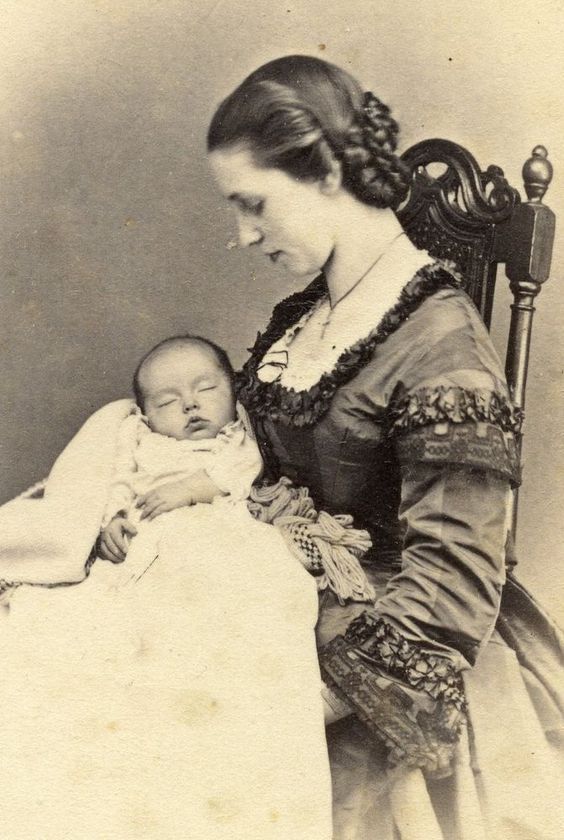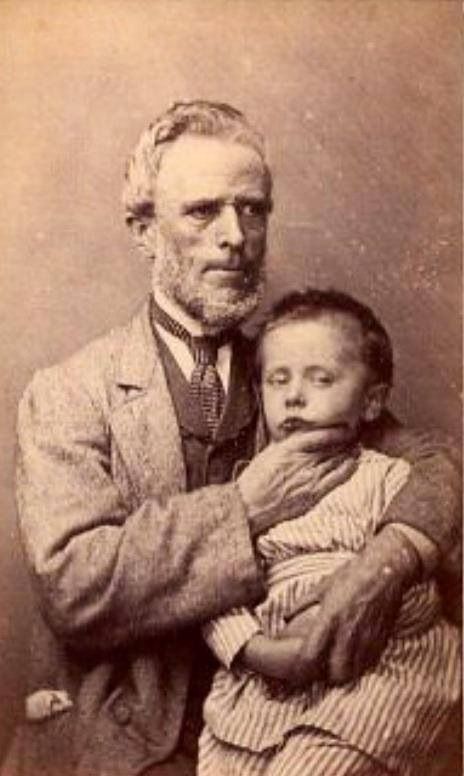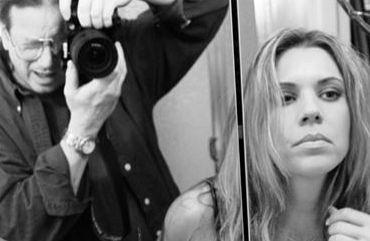The fact that in modern times we no longer deal with widespread death in the population the way they did back in the 19th century will be attested to in part by the reaction to this article. Simply talking about the subject today is quite often thought of as morbid.
[caption id="attachment_8568" align="alignnone" width="525"]

Source: https://bit.ly/2M72PwR[/caption]
Most of us nowadays live in a world in which death is kept pretty much at arm’s length. People pass away in hospitals and are sent to funeral homes, whereas not very long ago a great many people more often died at home, surrounded by friends and loved ones. Death was less antiseptic and there was a lot more of it. A LOT more. In the Victorian era, for example, before modern medicine, vaccines, penicillin , and understanding of disease and epidemics, people didn’t live as long and they frequently died of causes that are no longer much of a threat to the population.
[caption id="attachment_8578" align="alignnone" width="605"]

Source: https://bit.ly/2M72PwR[/caption]
[caption id="attachment_8565" align="alignnone" width="564"]

Source: https://bit.ly/2M72PwR[/caption]
[caption id="attachment_8562" align="alignnone" width="615"]

Source: https://bit.ly/2M72PwR[/caption]
We no long suffer from epidemics of diseases as diphtheria, typhus, smallpox and cholera that used to kill millions on a regular basis.
The rate of childhood mortality in the 19th century is especially appealing. Graveyards were full of children five years and younger. A mother might commonly give birth to 10 children and not see half of them survive to adulthood. Add to that the high statistic of mothers dying in childbirth and it is clear that trying to create a family could be a risky and dangerous proposition.
[caption id="attachment_8572" align="alignnone" width="615"]

Source: https://bit.ly/2M72PwR[/caption]
With such a different experience of death, Victorians had some very different ways of dealing with it. For example, with photography. Starting with the introduction of Daguerreotypes in 1839, there developed a custom of commemorating the passing of loved ones by photographing them, in many cases staging the images as if the deceased were still alive – as a way of both giving recognition to the dead and blunting the sharpness of grief.
In images that are both unsettling and strangely poignant, families pose with the dead, infants appear asleep, and consumptive young ladies elegantly recline, the disease not only taking their life but increasing their beauty. Photos of memento mori – literally meaning “remember you must die” – took several forms, and existed long before Victorian times.
[caption id="attachment_8563" align="alignnone" width="615"]

Source: https://bit.ly/2M72PwR[/caption]
[caption id="attachment_8567" align="alignnone" width="615"]

Source: https://bit.ly/2M72PwR[/caption]
The earliest version of Victorian death photos – or post-mortem photography – was simple: the deceased person was
photographed in a casket, usually in the parlor of their home before loved ones came to pay their respects.
These images were a simple way of remembering those who had passed, and served as a form of
memento mori, a popular Latin phrase meaning “remember that you will die.”
Some photos, called “
hidden mother” pictures, were taken because the mother didn’t want to be seen – she simply hid behind a sheet and held the baby in her arms. In some cases, the baby photographed wasn’t deceased, the mother was simply there to hold them still.
In some cases artists would paint open eyes over the deceased person’s closed eyelids. As a result, researchers often have a hard time determining which of these photos feature deceased babies.
Later in the Victorian period, photography advanced to the point where simple, Photoshop-like touches were possible. After the picture was developed, things like rosy cheeks could be painted on to make the deceased look more lifelike.
[caption id="attachment_8581" align="alignnone" width="380"]

Source: https://bit.ly/2M72PwR[/caption]
[caption id="attachment_8577" align="alignnone" width="464"]

Source: https://bit.ly/2M72PwR[/caption]
Open eyes were
painted onto the photo negative to further disguise the deceased as the living. Parents would pose alongside their dead children. The
childhoood mortality rats during the Victorian era was very high, thanks to diseases like smallpox and tuberculosis. Many children did not make it to the age of three. Sadly, the only photo taken of an entire family might be one with the youngest in a coffin.
As with the living today, the deceased were often posed with some of their favorite items. Young girls might be photographed alongside dolls, while adults were typically posed with things like books, letters, or flowers. This was done to help the living remember their deceased loved ones and their personalities, professions, or hobbies,
**********************************
 Bill Dobbins is a pro photographer located in Los Angeles. He is a veteran photographer and videographer who has exhibited his fine art in two museums and a number of galleries and who has published eight books, including two fine art photo books:
The Women: Photographs of The Top Female Bodybuilders (Artisan)
Modern Amazons (Tashen)
Bill Dobbins is a pro photographer located in Los Angeles. He is a veteran photographer and videographer who has exhibited his fine art in two museums and a number of galleries and who has published eight books, including two fine art photo books:
The Women: Photographs of The Top Female Bodybuilders (Artisan)
Modern Amazons (Tashen)
WEBSITES
BILL DOBBINS PHOTOGRAPHY
www.billdobbinsphotography.com
BILL DOBBINS ART
www.billdobbinsart.com
FEMALE PHYSIQUE SITES
www.billdobbins.com
EMAIL:
billdobbinsphoto@gmail.com
[caption id="attachment_8566" align="alignnone" width="615"]

Source: https://bit.ly/2M72PwR[/caption]
 Source: https://bit.ly/2M72PwR[/caption]
Most of us nowadays live in a world in which death is kept pretty much at arm’s length. People pass away in hospitals and are sent to funeral homes, whereas not very long ago a great many people more often died at home, surrounded by friends and loved ones. Death was less antiseptic and there was a lot more of it. A LOT more. In the Victorian era, for example, before modern medicine, vaccines, penicillin , and understanding of disease and epidemics, people didn’t live as long and they frequently died of causes that are no longer much of a threat to the population.
[caption id="attachment_8578" align="alignnone" width="605"]
Source: https://bit.ly/2M72PwR[/caption]
Most of us nowadays live in a world in which death is kept pretty much at arm’s length. People pass away in hospitals and are sent to funeral homes, whereas not very long ago a great many people more often died at home, surrounded by friends and loved ones. Death was less antiseptic and there was a lot more of it. A LOT more. In the Victorian era, for example, before modern medicine, vaccines, penicillin , and understanding of disease and epidemics, people didn’t live as long and they frequently died of causes that are no longer much of a threat to the population.
[caption id="attachment_8578" align="alignnone" width="605"] Source: https://bit.ly/2M72PwR[/caption]
[caption id="attachment_8565" align="alignnone" width="564"]
Source: https://bit.ly/2M72PwR[/caption]
[caption id="attachment_8565" align="alignnone" width="564"] Source: https://bit.ly/2M72PwR[/caption]
[caption id="attachment_8562" align="alignnone" width="615"]
Source: https://bit.ly/2M72PwR[/caption]
[caption id="attachment_8562" align="alignnone" width="615"] Source: https://bit.ly/2M72PwR[/caption]
We no long suffer from epidemics of diseases as diphtheria, typhus, smallpox and cholera that used to kill millions on a regular basis.
The rate of childhood mortality in the 19th century is especially appealing. Graveyards were full of children five years and younger. A mother might commonly give birth to 10 children and not see half of them survive to adulthood. Add to that the high statistic of mothers dying in childbirth and it is clear that trying to create a family could be a risky and dangerous proposition.
[caption id="attachment_8572" align="alignnone" width="615"]
Source: https://bit.ly/2M72PwR[/caption]
We no long suffer from epidemics of diseases as diphtheria, typhus, smallpox and cholera that used to kill millions on a regular basis.
The rate of childhood mortality in the 19th century is especially appealing. Graveyards were full of children five years and younger. A mother might commonly give birth to 10 children and not see half of them survive to adulthood. Add to that the high statistic of mothers dying in childbirth and it is clear that trying to create a family could be a risky and dangerous proposition.
[caption id="attachment_8572" align="alignnone" width="615"] Source: https://bit.ly/2M72PwR[/caption]
With such a different experience of death, Victorians had some very different ways of dealing with it. For example, with photography. Starting with the introduction of Daguerreotypes in 1839, there developed a custom of commemorating the passing of loved ones by photographing them, in many cases staging the images as if the deceased were still alive – as a way of both giving recognition to the dead and blunting the sharpness of grief.
In images that are both unsettling and strangely poignant, families pose with the dead, infants appear asleep, and consumptive young ladies elegantly recline, the disease not only taking their life but increasing their beauty. Photos of memento mori – literally meaning “remember you must die” – took several forms, and existed long before Victorian times.
[caption id="attachment_8563" align="alignnone" width="615"]
Source: https://bit.ly/2M72PwR[/caption]
With such a different experience of death, Victorians had some very different ways of dealing with it. For example, with photography. Starting with the introduction of Daguerreotypes in 1839, there developed a custom of commemorating the passing of loved ones by photographing them, in many cases staging the images as if the deceased were still alive – as a way of both giving recognition to the dead and blunting the sharpness of grief.
In images that are both unsettling and strangely poignant, families pose with the dead, infants appear asleep, and consumptive young ladies elegantly recline, the disease not only taking their life but increasing their beauty. Photos of memento mori – literally meaning “remember you must die” – took several forms, and existed long before Victorian times.
[caption id="attachment_8563" align="alignnone" width="615"] Source: https://bit.ly/2M72PwR[/caption]
[caption id="attachment_8567" align="alignnone" width="615"]
Source: https://bit.ly/2M72PwR[/caption]
[caption id="attachment_8567" align="alignnone" width="615"] Source: https://bit.ly/2M72PwR[/caption]
The earliest version of Victorian death photos – or post-mortem photography – was simple: the deceased person was photographed in a casket, usually in the parlor of their home before loved ones came to pay their respects.
These images were a simple way of remembering those who had passed, and served as a form of memento mori, a popular Latin phrase meaning “remember that you will die.”
Some photos, called “hidden mother” pictures, were taken because the mother didn’t want to be seen – she simply hid behind a sheet and held the baby in her arms. In some cases, the baby photographed wasn’t deceased, the mother was simply there to hold them still.
In some cases artists would paint open eyes over the deceased person’s closed eyelids. As a result, researchers often have a hard time determining which of these photos feature deceased babies.
Later in the Victorian period, photography advanced to the point where simple, Photoshop-like touches were possible. After the picture was developed, things like rosy cheeks could be painted on to make the deceased look more lifelike.
[caption id="attachment_8581" align="alignnone" width="380"]
Source: https://bit.ly/2M72PwR[/caption]
The earliest version of Victorian death photos – or post-mortem photography – was simple: the deceased person was photographed in a casket, usually in the parlor of their home before loved ones came to pay their respects.
These images were a simple way of remembering those who had passed, and served as a form of memento mori, a popular Latin phrase meaning “remember that you will die.”
Some photos, called “hidden mother” pictures, were taken because the mother didn’t want to be seen – she simply hid behind a sheet and held the baby in her arms. In some cases, the baby photographed wasn’t deceased, the mother was simply there to hold them still.
In some cases artists would paint open eyes over the deceased person’s closed eyelids. As a result, researchers often have a hard time determining which of these photos feature deceased babies.
Later in the Victorian period, photography advanced to the point where simple, Photoshop-like touches were possible. After the picture was developed, things like rosy cheeks could be painted on to make the deceased look more lifelike.
[caption id="attachment_8581" align="alignnone" width="380"] Source: https://bit.ly/2M72PwR[/caption]
[caption id="attachment_8577" align="alignnone" width="464"]
Source: https://bit.ly/2M72PwR[/caption]
[caption id="attachment_8577" align="alignnone" width="464"] Source: https://bit.ly/2M72PwR[/caption]
Open eyes were painted onto the photo negative to further disguise the deceased as the living. Parents would pose alongside their dead children. The childhoood mortality rats during the Victorian era was very high, thanks to diseases like smallpox and tuberculosis. Many children did not make it to the age of three. Sadly, the only photo taken of an entire family might be one with the youngest in a coffin.
As with the living today, the deceased were often posed with some of their favorite items. Young girls might be photographed alongside dolls, while adults were typically posed with things like books, letters, or flowers. This was done to help the living remember their deceased loved ones and their personalities, professions, or hobbies,
Source: https://bit.ly/2M72PwR[/caption]
Open eyes were painted onto the photo negative to further disguise the deceased as the living. Parents would pose alongside their dead children. The childhoood mortality rats during the Victorian era was very high, thanks to diseases like smallpox and tuberculosis. Many children did not make it to the age of three. Sadly, the only photo taken of an entire family might be one with the youngest in a coffin.
As with the living today, the deceased were often posed with some of their favorite items. Young girls might be photographed alongside dolls, while adults were typically posed with things like books, letters, or flowers. This was done to help the living remember their deceased loved ones and their personalities, professions, or hobbies,
 Bill Dobbins is a pro photographer located in Los Angeles. He is a veteran photographer and videographer who has exhibited his fine art in two museums and a number of galleries and who has published eight books, including two fine art photo books:
The Women: Photographs of The Top Female Bodybuilders (Artisan)
Modern Amazons (Tashen)
WEBSITES
BILL DOBBINS PHOTOGRAPHY
www.billdobbinsphotography.com
BILL DOBBINS ART
www.billdobbinsart.com
FEMALE PHYSIQUE SITES
www.billdobbins.com
EMAIL: billdobbinsphoto@gmail.com
[caption id="attachment_8566" align="alignnone" width="615"]
Bill Dobbins is a pro photographer located in Los Angeles. He is a veteran photographer and videographer who has exhibited his fine art in two museums and a number of galleries and who has published eight books, including two fine art photo books:
The Women: Photographs of The Top Female Bodybuilders (Artisan)
Modern Amazons (Tashen)
WEBSITES
BILL DOBBINS PHOTOGRAPHY
www.billdobbinsphotography.com
BILL DOBBINS ART
www.billdobbinsart.com
FEMALE PHYSIQUE SITES
www.billdobbins.com
EMAIL: billdobbinsphoto@gmail.com
[caption id="attachment_8566" align="alignnone" width="615"] Source: https://bit.ly/2M72PwR[/caption]
Source: https://bit.ly/2M72PwR[/caption]






